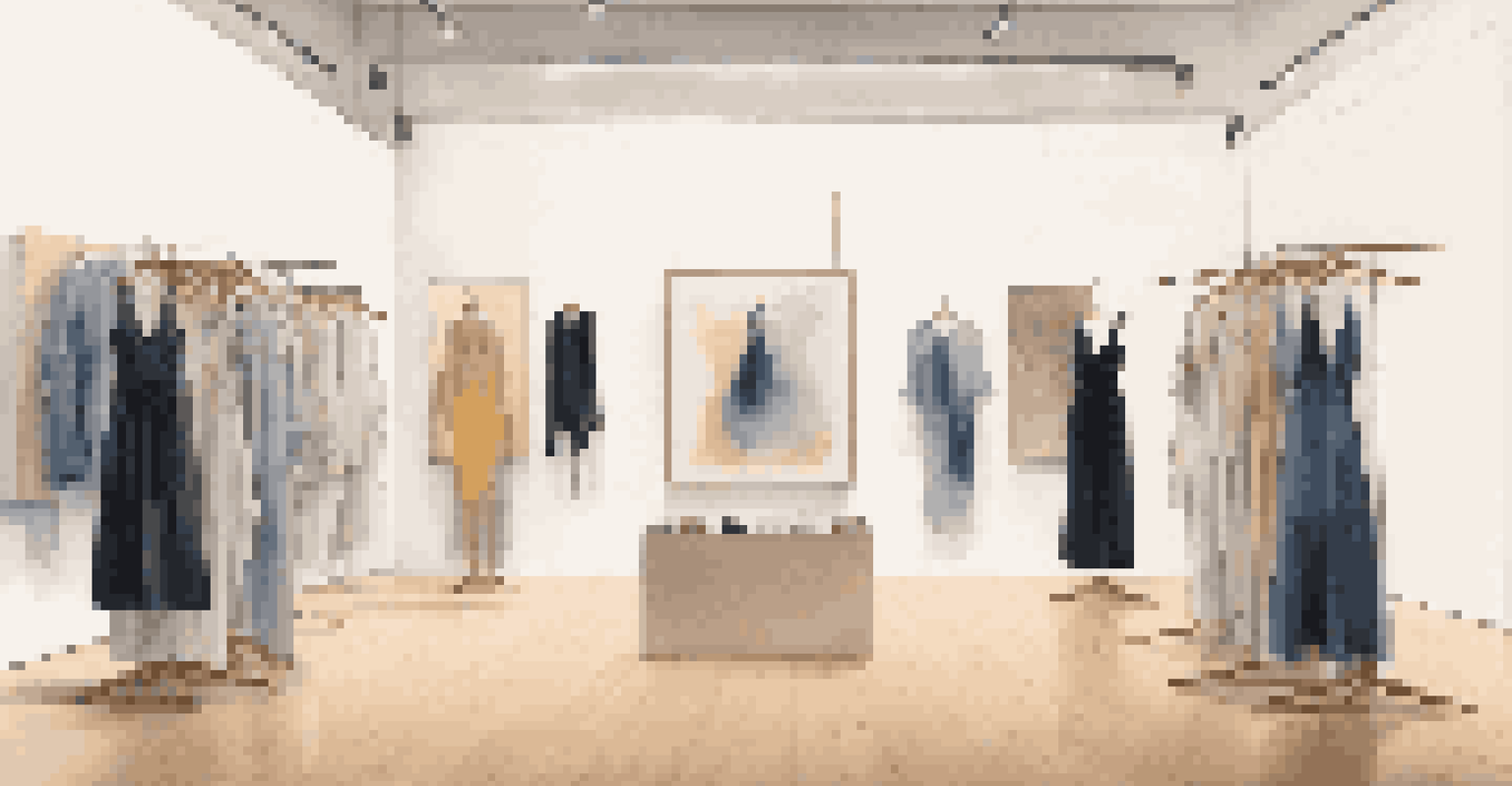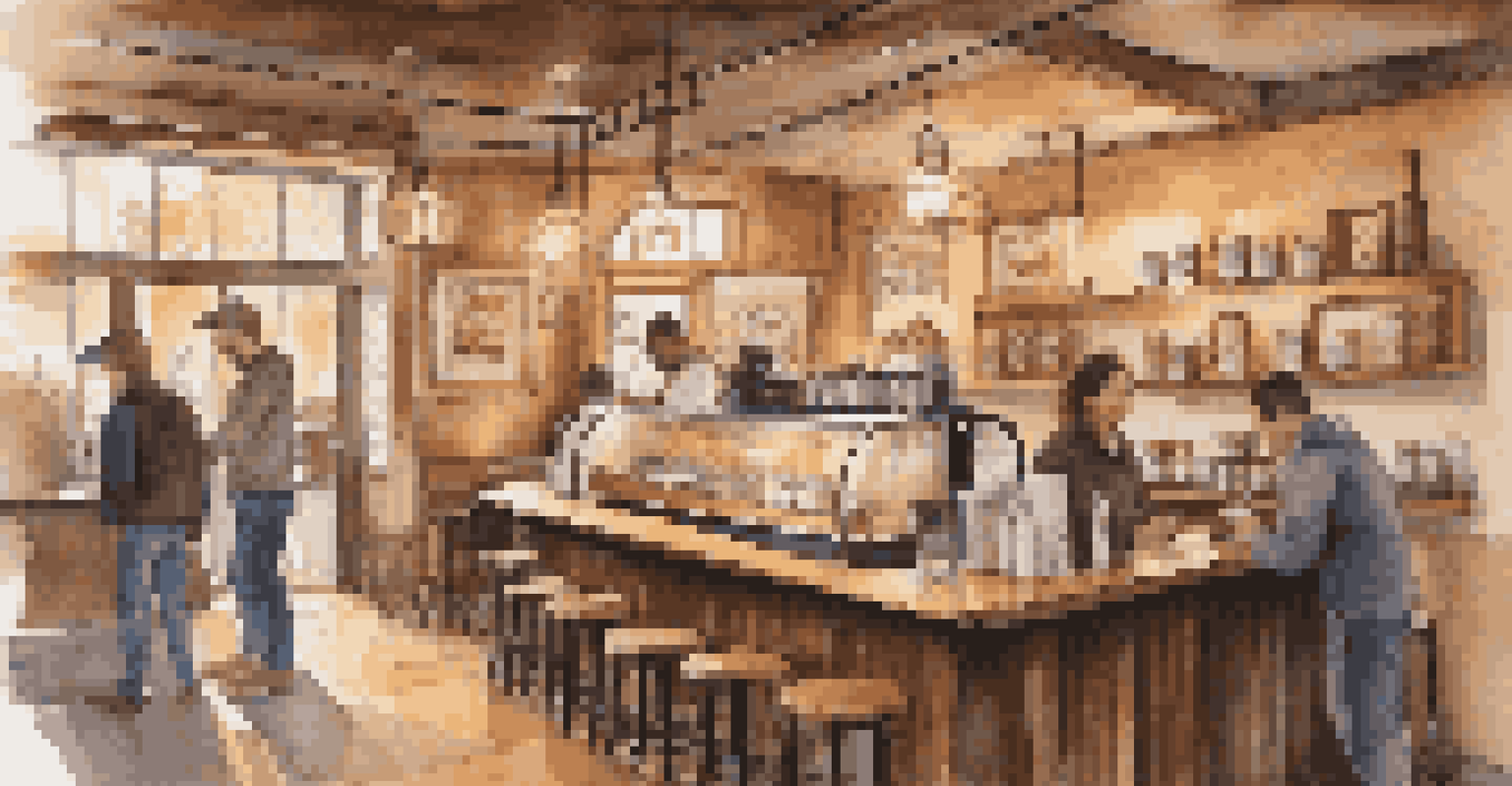Artistic Collaborations: Merging Creativity with Consumer Brands

What Are Artistic Collaborations and Why Do They Matter?
Artistic collaborations involve partnerships between artists and consumer brands, blending creative expression with marketing strategies. These collaborations can take many forms, from limited edition products to immersive art experiences. At their core, they aim to create something unique that resonates with audiences, showcasing both the brand's identity and the artist's vision.
Art is the most beautiful of all lies; it is a glimpse into the soul of the artist and the world they perceive.
In today's fast-paced market, brands are constantly seeking innovative ways to stand out. By collaborating with artists, they tap into fresh perspectives and creative ideas that can redefine their image. This synergy not only attracts attention but also fosters a sense of community among fans of both the brand and the artist.
Moreover, these collaborations often lead to memorable experiences for consumers. For instance, a fashion label working with a street artist can transform an ordinary clothing line into a wearable piece of art. This not only adds value to the product but also creates an emotional connection that extends beyond the transaction.
The Benefits of Merging Art with Consumer Brands
One of the most significant benefits of artistic collaborations is the enhancement of brand identity. By associating with a particular artist, a brand can convey specific values and aesthetics that resonate with its target audience. This can lead to increased brand loyalty, as consumers often feel more connected to brands that support the arts.

Additionally, these collaborations can drive sales. Limited edition items or unique experiences tend to generate buzz, leading to higher demand. For example, when a well-known artist collaborates with a beverage brand to create a special can design, collectors often seek out these unique items, boosting sales and brand visibility.
Art Meets Marketing for Impact
Artistic collaborations blend creativity with marketing, creating unique products that resonate with audiences.
Artistic collaborations also open the door to new markets. Brands can reach diverse demographics by partnering with artists from various backgrounds. This not only broadens their consumer base but also enriches their brand narrative, making it more inclusive and relatable.
Notable Examples of Successful Collaborations
There are countless examples of successful artistic collaborations that have made a significant impact. One standout is the partnership between Nike and renowned artist Takashi Murakami, which resulted in a limited edition sneaker line featuring Murakami's signature floral designs. This collaboration not only sold out quickly but also elevated Nike's status in the art world.
Creativity takes courage.
Another notable example is the collaboration between IKEA and the artist Virgil Abloh, which introduced a collection that blended contemporary art with functional home design. This partnership attracted attention from both design enthusiasts and the general public, showcasing how art can enhance everyday living spaces.
These examples illustrate how artistic collaborations can not only drive sales but also create cultural moments. When brands align themselves with artists who have a strong following, they tap into an existing fan base that can amplify their reach and impact.
How to Choose the Right Artist for Your Brand
Choosing the right artist for a collaboration is crucial for success. Brands should look for artists whose values and style align with their own, ensuring a natural fit. This alignment not only facilitates a smoother creative process but also resonates more deeply with consumers who appreciate authenticity.
It's also important to consider the artist's audience. Collaborating with an artist who has a strong following can expand the brand's reach. For instance, a beauty brand partnering with a popular makeup artist can attract their fans, leading to increased visibility and potential sales.
Boosting Brand Identity and Sales
Partnering with artists enhances brand identity and drives sales through limited edition items and memorable experiences.
Lastly, clear communication between the brand and the artist is essential. Setting expectations and establishing a shared vision can help prevent misunderstandings and ensure that the final product reflects both parties' strengths and creativity.
The Role of Social Media in Artistic Collaborations
Social media plays a pivotal role in promoting artistic collaborations, providing a platform for brands and artists to showcase their work. By leveraging social media channels, they can share behind-the-scenes content, teasers, and launch announcements that generate excitement among their audiences. This creates a sense of anticipation that can drive engagement and sales.
Moreover, social media allows for real-time feedback from consumers. Brands can gauge public interest and adjust their strategies accordingly. For example, if a particular design resonates well on social media, the brand can produce more of that item or create similar collaborations in the future.
Additionally, the viral nature of social media can amplify the success of these collaborations. When followers share content related to the partnership, it can reach a broader audience, increasing brand awareness and attracting new customers who may not have been familiar with the brand or artist initially.
Challenges in Artistic Collaborations and How to Overcome Them
While artistic collaborations can be incredibly rewarding, they also come with their fair share of challenges. One common issue is differing visions, where the brand and the artist may have conflicting ideas about the project. To mitigate this, it's essential to establish clear communication and set expectations from the outset.
Another challenge is balancing commercial goals with artistic integrity. Brands might prioritize sales, while artists may want to focus on creative expression. Finding a middle ground that respects both perspectives can lead to a more successful collaboration that satisfies both parties and their audiences.
Social Media Amplifies Collaborations
Social media plays a crucial role in promoting artistic collaborations, enabling brands to engage audiences and generate excitement.
Lastly, managing timelines and deliverables can be tricky, especially if the artist works independently. Setting realistic deadlines and maintaining open lines of communication throughout the project can help keep everything on track and ensure that the collaboration is completed successfully.
Future Trends in Artistic Collaborations
As we look to the future, artistic collaborations are likely to evolve alongside changing consumer behaviors and technological advancements. With the rise of virtual and augmented reality, brands may explore immersive experiences that merge art with technology, offering consumers unique ways to engage with their products.
Sustainability is also becoming a key focus, with consumers increasingly prioritizing eco-friendly practices. Brands that collaborate with artists to create sustainable products or promote environmental awareness are likely to resonate with conscious consumers looking for meaningful ways to connect with brands.

Finally, the ongoing popularity of social media will continue to shape how artistic collaborations are executed and promoted. As new platforms emerge, brands and artists will need to adapt their strategies to reach audiences in innovative ways, ensuring that these partnerships remain relevant and impactful.